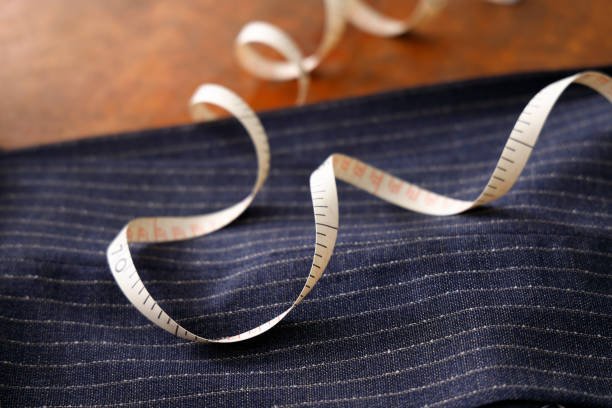The Lost Art Of Tailoring
Living in the western world, especially in the U.S. there is a tendency to throw away the things you don’t want, don’t need, or don’t work anymore. Rather than seeking to repair the item, most of us decide to rid ourselves of the piece and replace it with a new one, a wasteful but efficient, low-energy way of living. Some things of course cannot be fixed. For instance, once a glass shatters there’s no way to bring the cup back to its original glory. But one thing that can be repaired, yet rarely is ever taken to receive repairs is our clothes, shoes, and accessories.
The first time I remember having a piece of clothing tailored was for my junior homecoming. I thrifted a baby pink BCBG mini dress for $50. The dress was perfect in every way except for the bust. The previous owner was much more well endowed than I, and alterations were necessary for me to wear it. I wore that same dress again to my cousin’s pastel-themed wedding five years later and still cherish that dress to this day.
Since that first time, I’ve gotten many other things tailored. However, rarely do I hear of others doing the same. My friend, who has an unreal waist-to-hip ratio, tailored her graduation dress but has not taken the time to receive alterations on any of her clothes before or since, despite her coke bottle frame. This frame almost always requires regular alterations for bottoms to fit properly. She’s constantly frustrated about skirts and pants not fitting correctly but never thinks to fix the issue by going to a tailor.
Typically, the only time many think to go to a tailor is for special events like a wedding, graduation, or formal ceremony. But maintaining one’s clothes can go beyond these one-off occasions. A perfectly tailored suit is a forever item, shoes needing a good shining or heel replacement is a task any cobbler can do, and bags with stains or broken straps from rowdy toddlers can easily be mended by a professional. When deciding whether or not to seek professional help, the most important question is whether you love the item enough.
There are several benefits to repairing and reviving the clothes, shoes, and accessories in your life. The most obvious one being it will fit you perfectly. There’s less fuss with wearing a belt or specific type of bra if the item is made to your unique frame. Dresses can have padding even added or removed depending on your needs. One can also keep these items longer, especially the more expensive, high-quality pieces. Lastly, many tailors own their businesses, and with the rise in awareness of the importance of small businesses in your community, it’s a great opportunity to support their survival.
Of course, like anything, there are going to be some downsides. Depending on the intricacy and material of the item, it can be costly. However, the cost-per-wear is what’s important here. Say, you purchase a pair of work shoes for $100 and after a year the shoes need repairs, which costs $70. Those shoes are now a total of $170. If you wear those shoes three times a week to work for a year, the cost per wear of that item is $1.08. Sounds like a steal to me.
Another downside is you have to take the time out of your day to do the fitting and pick up the item in a week or two. However, this is a minor convenience since fittings do not take more than 30 min on average. Lastly, not all fabrics can be tailored. Cheaper materials like a satin slip dress from Boohoo are too fragile and can easily be damaged during alterations. So, most tailors won’t bother with the item. Leather is another material that can be difficult to work with. Overall, if you’re looking to tailor an item of clothing, choose high-quality, sturdy materials.
There are countless ways to maintain the items you love in your life for longer. Cobblers are still a thing! They can do simple things like clean and resole a shoe. You can also easily bring your shoes in to repair a broken heel, prevent damage so said heel does not break as easily, and add padding to the insole or arch of a shoe for more comfort. But the craziest ability they have is modifying a shoe in case your foot grew to give you a little extra room. If that’s not magic, I don’t know what is.
Bag repair men can replace the straps on your vintage Louis Vuitton, remove the stain created by your overactive toddler, polish leather to its shine, and fix tears in the stitching. Jewelers can do all of the things that cobblers and bag repair professionals do but with jewelry. The most common of course is changing a ring size but they can even bring your grandfather’s favorite watch back to life with something as simple as replacing a battery.
There are countless ways to maintain quality clothes, shoes, and accessories in your closet rather than throwing them away and replacing them with new ones. If you’re unsure if the damage to your item can be fixed, the consultation is usually free. Ask your local professional how to bring life back to the things that truly matter to you. And you never know. Maybe someone in the future will now have the opportunity to appreciate it just as much as you did.

